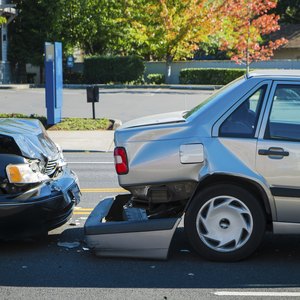
When you get behind the wheel of a car, you have a legal duty to operate it responsibly. In no-fault insurance states, if you’re involved in an accident, your own insurer pays for your medical bills even if you weren’t driving responsibly. The majority of states aren’t no-fault jurisdictions, however, so issues of evasive action can come into play.
Comparative Negligence
Comparative negligence is the flip side of no-fault insurance. If you’re involved in an accident and make a claim, a claims adjuster will investigate to determine which driver was at fault. Often, both drivers have some liability. If you swerve to avoid hitting a jaywalker and hit a car in the next lane, you have some degree of fault. If the other car did nothing to avoid your vehicle, that driver has some degree of fault as well. If you’re 50 percent at fault, your damages are reduced by 50 percent in comparative negligence states. If your damages total $4,000, for example, you would be entitled to collect no more than $2,000.
Effect of Evasive Action
Taking evasive action means you did something to try to avoid the accident. If the driver in the other lane did nothing to avoid hitting you, he failed to take evasive action and this would contribute to his percentage of fault. Then there’s the matter of the jaywalker. Because you did take evasive action to avoid hitting him, he may become liable for a portion of the damages.
References
Writer Bio
Beverly Bird has been writing professionally for over 30 years. She is also a paralegal, specializing in areas of personal finance, bankruptcy and estate law. She writes as the tax expert for The Balance.

